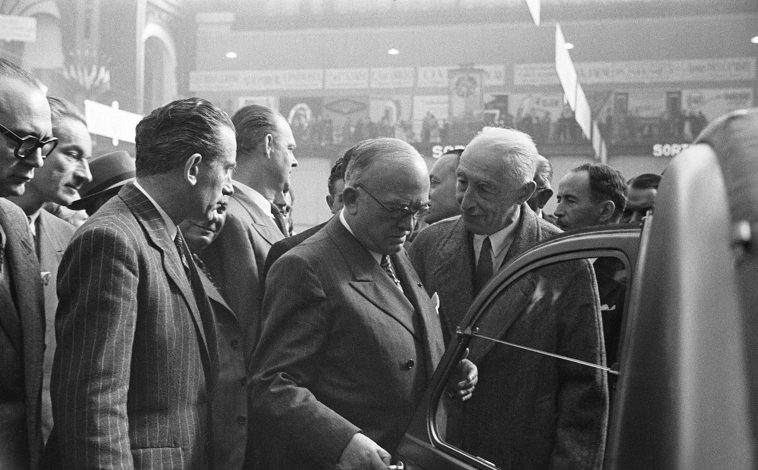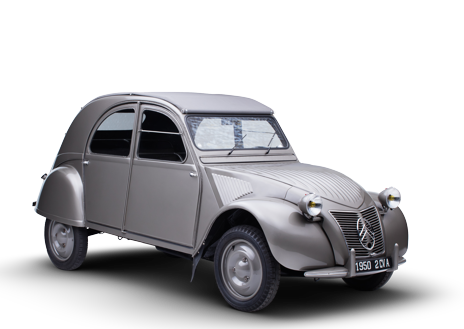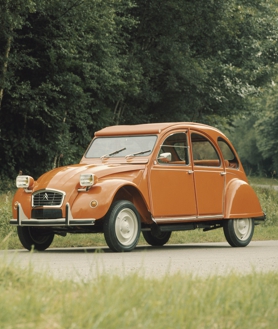In 1948, at the Paris Motor Show, expectation of a new Citroën model was expected. The buzz that had been heard in the world of motor journalists and fans pointed to a small and practical vehicle designed for the field. Front-wheel drive, of course. No one thought of great technical or aesthetic boasts. The Citroën 2CV was an innovative model in its time that had to be presented twice: in the 1948 and 1949 editions of the Paris Motor Show.
At the gates of a new Hall in the French capital, automotive fans nostalgically remember a model that could almost fit into the current SUV segment, suitable for meeting the basic needs to move with it both on the road and on the road. the middle of the field. It is without a doubt a much loved and particular car, almost as much as the history that surrounds its birth and commercialization.
The development of the Citroën 2CV continued for a decade, with a World War in between. All types of materials, designs and configurations were tested using the most advanced technologies of that time. Changes were made to the project until literally the last minute.
The Citroën 2CV was an innovative model in its time that had to be presented twice: in the 1948 and 1949 editions of the Paris Motor Show. In the first place of the presentations, the surprise was great when Pierre Boulanger, General Manager of Citroën and architect of this new concept of mobility, removed the veil that hid the new model before a select audience. "Here is the car of the future," Boulanger told a stunned audience, led by the then President of the French Republic, Vincent Auriol.
Those attending this ceremony and all those who attended the Hall during the following days were stunned to see the peculiar aesthetics of this model. There were comments for all tastes. From “horrible” “weird” or “scary” to “funny” or “unique”. The press, for its part, was not too forgiving of its design. However, neither the critics nor the public had the opportunity to be stunned by its engine, since none of the 3 units on display had it.
Behind this absence hid a last minute technical change. The driver-operated mechanical shuttle starter had just been ruled out and the ultimate electric starter wasn't quite ready yet. For this reason, Citroën decided not to show anything until 1949, arousing the curiosity of specialized journalists, who were willing to do anything to discover what was hidden under the hood of that strange car. Some even stormed the brand's test circuit at La Ferté-Vidame.



Evolution of the 2CV since its presentation PF
The intrigue resolved itself the following year, when a 2 CV that taught all the secrets of its 375 cm3 air-cooled engine, with a 4-speed transmission and 9 CV of power, was the king and lord of the marque's stand. The enthusiasm was not unanimous: "Of course, this car is not going to help to clean up the State's finances", regrets the French Minister of Finance and Economic Affairs of those days, Maurice Petsche, when seeing its characteristics and, above all, its scarce two tax horses.
At the 1950 Motor Show, the Citroën 2CV once again marked another milestone with the publication of the smallest catalog in the history of the automobile. Already in 1949, the brand had broken records with a tiny triptych, with 4 black and white illustrations. The following year, Citroën went even further with a 9 x 13,5 cm document, printed on one side and with a side plan of the Citroën 2 CV Van as the only image. Its benefits are self-explanatory.
With the aim of democratizing the automobile, the 2 CV project, also called TPV (Very Small Car), was born in 1938 with the idea of creating a vehicle for the social classes with few intrusions from rural areas. world. Pierre Boulanger drew up this specification: "four seated seats, 50 kg of luggage, 2 CVtaxes, front-wheel drive, 60 km/h top speed, three-speed gearbox, easy maintenance, with a suspension that allows you to cross a field plowed with a basket of eggs without breaking any, and with a consumption of only 3 liters per 100 kilometers“. Suspended during the war, the project would give rise to the Citroën 2 CV in 1948.
In a country undergoing reconstruction, which aspired to greater well-being, its commercial launch came at the right time. Initially available exclusively as a convertible sedan, from 1950 it was also offered in a van version. It will sell more than 5 million units at the end of its production in 1990. Marketed in different versions such as Charleston, in two-tone bodywork, Cocorico or Sahara in 4×4 version, it has marked the memory of several generations with its rounded silhouette. More than a symbol, the 2 CV is a way of life.
